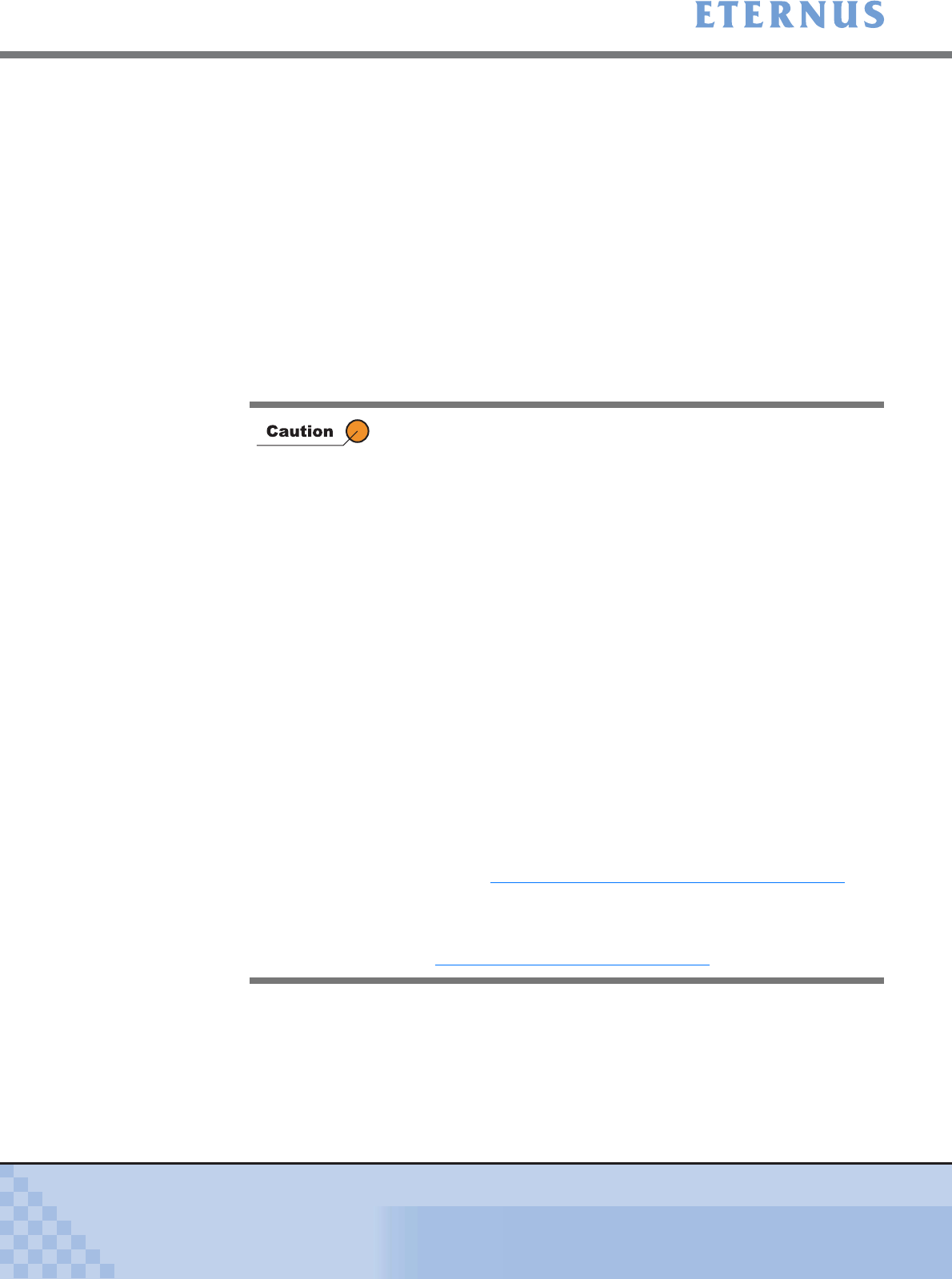
Chapter 5 Configuration Menu
> 5.2 RAID Management
ETERNUS DX400/DX8000 series ETERNUSmgr User Guide Settings/Maintenance
149
Copyright 2010 FUJITSU LIMITED
P2X0-0760-02ENZ0
*2: Pair BRT are BRT#0/BRT#1, BRT#2/BRT#3, BRT#4/BRT#5, BRT#6/BRT#7, used as sets.
The disk drives in the pair BRTs are the disk drives installed in the DEs which are connected to
the paired BRT and to the cascade connected DEs. These DEs can be recognized by the
lower 4 bits of the DE-ID (DE#xx).
• DEs under pair BRT (BRT#0/BRT#1): DE#x0, DE#x1, DE#x2, DE#x3 (All x =0 – 7)
• DEs under pair BRT (BRT#2/BRT#3): DE#x4, DE#x5, DE#x6, DE#x7 (All x =0 – 7)
• DEs under pair BRT (BRT#4/BRT#5): DE#x8, DE#x9, DE#xA, DE#xB (All x =0 – 7)
• DEs under pair BRT (BRT#6/BRT#7): DE#xC, DE#xD, DE#xE, DE#xF (All x =0 – 7)
(Example) DEs under pair BRT (BRT#0/BRT#1) are as follows:
DE#00, DE#01, DE#02, DE#03
DE#10, DE#11, DE#12, DE#13
DE#20, DE#21, DE#22, DE#23
DE#30, DE#31, DE#32, DE#33
DE#40, DE#41, DE#42, DE#43
DE#50, DE#51, DE#52, DE#53
DE#60, DE#61, DE#62, DE#63
DE#70, DE#71, DE#72, DE#73
• Disks can be selected in the following cases.
- No longer assigned to a RAID group (*1)
- Disk status is PRESENT (*2)
- Not registered as a REC Disk Buffer
*1: The RAID group where the disk was registered has been
deleted.
*2: The disk has been installed, but it is not being used (has not
been assigned to a RAID Group or a hot spare disk yet).
On the Device Status display, this disk status is shown as a
"Blue LED".
• When creating a RAID Group, all disks to be used in the RAID
Group must be the same capacity. If disks of different capacities
exist in a RAID Group, the smallest becomes the standard, and
all other disks are regarded as the same capacity as the smallest
disk. In this case, the remaining disk space will NOT be used.
• In the following cases, an input error screen appears.
- When selecting 33 or more disks
- When attempting to create DVCF Mode ON RAID1 using a
disk more than 300GB.
- When selecting disks other than the specified number of
configuration disks for each RAID level.
For supported RAID Group configurations of each RAID level,
refer to "Supported RAID Group configuration" (page 146)
.
- When the Loop where the selected disk belongs does not
meet conditions for each RAID level.
For the disk layout restrictions for each RAID level, refer to
"Restrictions of disk layout" (page 148)
.


















